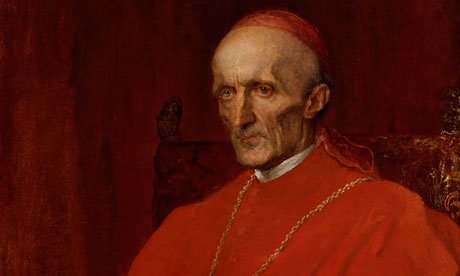
It is difficult to see continuity with the Church’s teaching on Christian unity and non-Catholic cults before the Second Vatican Council and after the Second Vatican Council.
Unitatis Redintegratio, the Council’s document on ecumenism, refers to erroneous religious sects as “ecclesial communities,” communities which “the Spirit of Christ has not refrained from using as means of salvation.” These so-called “ecclesial communities” can “enrich” the one true religion. Baptized members of these churches, it is said, are “in communion with the Catholic Church even though this communion is imperfect.”
Lumen Gentium re-iterates this novel theory by stating that Christ’s Church “subsists in the Catholic Church,” and that “many elements of sanctification and truth can be found outside her structure.” These “elements” are “gifts properly belonging to the Church of Christ” and “impel towards Catholic unity.”
Catholics, therefore, Unitatis argues, must not act “polemically” towards non-Catholic religions, but “must gladly acknowledge and esteem the truly Christian endowments from our common heritage which are to be found among our separated brethren.” Catholics must work for “visible unity” among “all Christians” so the “Church of Christ” (an intangible, more expansive institution than the Catholic Church) can be made manifest.
Henry Cardinal Manning, the famed Archbishop of Westminster from 1865 until his death in 1892, would have viewed these words as a clear break with Tradition. In alignment with Church practice and teaching before the 1960s, Manning held that those who are separated from the Catholic Church’s sacraments, doctrines or hierarchical body cannot, objectively speaking, be said to belong to the Church of Christ – the Catholic Church. As 2 Corinthians 6:15 states, “what concord hath Christ with Belial? Or what part hath the faithful with the unbeliever?”
Knowing that “Christian unity” can only brought about by a return of those who, for whatever reason, do not belong to the one true faith, Manning once wrote, “I believe there is no surer instrument of their return to the unity of grace and truth than the manifestation of the love of Jesus in the Holy Eucharist.”
The following excerpt is taken from Newman’s sermon “The Blessed Sacrament: The Center of Immutable Truth,” which was published in booklet form by Neumann Press in 1992. It’s quite the refutation of the Council’s documents.
In the so-called Reformation of the Church, there were those who denied the substantial presence of Jesus in the Holy Eucharist, and taught that it is not a reality, but a memorial, a sign or a figure. Having denied the Sacramental Body of Jesus, it was but consequent that they should deny also His mystical Body, that they should deny the visible perpetuity of visible unity of His Church, and teach that it is a body spiritual, invisible, impalpable, withdrawn from sense, hovering in a world unseen.
Separation from the visible Body of Christ is separation from the presence and assistance of the Holy Ghost Who inhabits it. There is no influx of His divine and infallible light into the intelligence of a body which breaks from the unity of the Church. There is no divine voice speaking through it as His organ of immutable truth. Straightaway all began to dissolve and go to pieces. For three hundred years it has been returning to dust.
On the day when the Blessed Sacrament was carried out of the churches of England, the whole population was contained within the unity of the one Body. Now hardly one-half remains to the Church which taught the fatal lesion of separation. From generation to generation, by a succession of crumbling secessions, divisions, and subdivisions, the flock it could not retain when the Blessed Sacrament is no longer upon the altar…
And what has happened visibly in its external divisions of communion, has wrought invisibly in the internal aberrations of its doctrines: the order of divine facts being broken through, and the substance shattered, the shadow betrayed its ruin.
If dogma be the intellectual conception of divine realities, what dogma is to be found where the divine realities of the Sacramental Body and mystical Body of Jesus, His Presence, His Sacrifice, His Seven Sacraments, His infallible and perpetual Voice, are denied?
